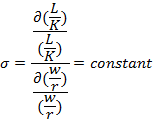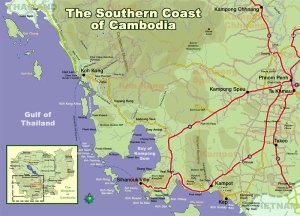CES function has been used widely in economic especially in the analysis of monopolistic competition with large number of firms and each producing differentiated products. The model dated back to Edward Chamberlin (1936) and Joan Robinson (1933) in graphical analysis. The mathematical model has been elaborated by Lancaster (1975, 1979), Spence (1976) and Dixit and Stiglitz (1977). There are two types of such models. The first type is called “ideal of variety” where many consumers differed in their preference on differentiated products. The second type is the “love of variety” where a single consumer demanding varieties of differentiated products. In general equilibrium
analysis (GE) or computable general equilibrium (CGE) it is known as Armington
assumption, according to Armington (1969). The Armington assumption assumed that the number of varieties per countries is fixed and it is quite different from monopolistic competition where the number of varieties in each country depends on free trade (endogenously determined in the model).
The term constant elasticity of substitution is referred to the constant rate of substitution between two products or factors at constant rate with regards to the ration of their own price. That is the rate is constant and is expressed by the following expression.
Knowing the history of CES function let take a looks and its mathematical form. The benefits of CES will be summarized at the end. Let begin with two goods case. We begin with CES production function with two factors: Labor (L) and Capital (K).
Where δ:factor share and σ:elasticity of substitution between factors.
It can be shown that CES is also constant return to scale (CRS) that is homogenous of degree one and it is equivalent to Cobb-Douglas function of the case constant return to scale that is ![]()
If we assume that the factor share are equal (this is equivalent to symmetric cases among each varieties) then,
![]()
By using (2) we can re-write (1) as:

By rising both sides of (3) to the power of ![]() we obtain:
we obtain:

By monotonic property of homothetic function, let;

we finally got the simplified version as:
In international trade for differentiated products such as that of Krugman (1979) is in the following form is used:
In summary the benefits of CES are:
- It can be used for many products or factor cases where each is differentiated.
- It is Constant Return to Scale (CRS) function so qualified for Euler’s Theorem that is each product or factor can be paid by the rate of it marginal product. CRS will lead to zero profit and exhausted distributed of income over its factors or products
- Easy or composite price index and the use of Shepard lemma.
The whole article is based on Robert C. Feenstra (2004),”Advanced International Trade: Theory and Evidence” and Alpha C. Chiang (1984), “Fundamental Methods of Mathematical Economics”.







